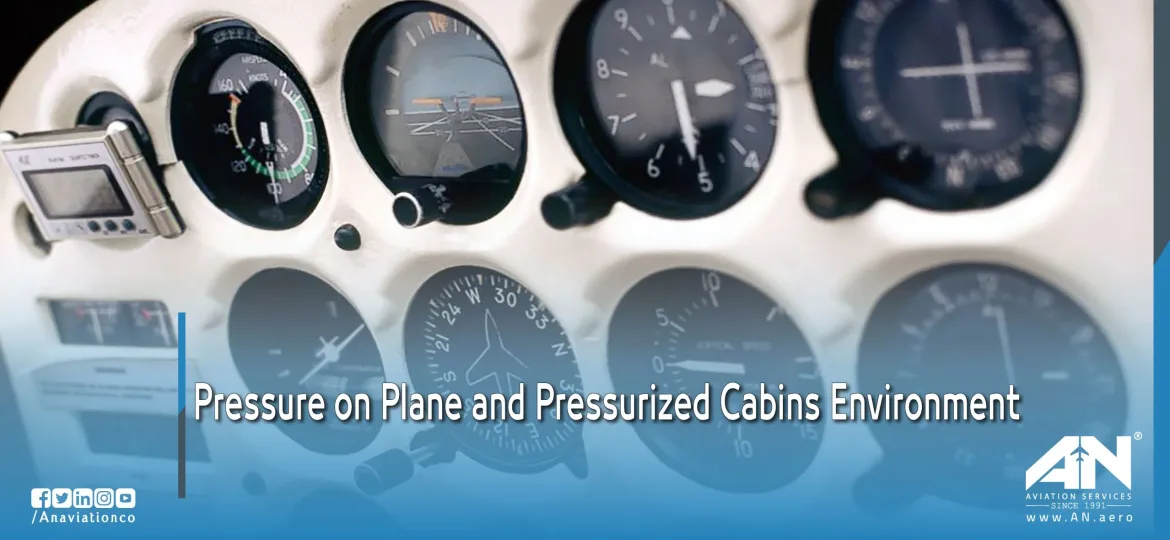
Flying at high altitudes is one of the marvels of modern aviation, but it comes with its challenges. To make air travel safe and comfortable for passengers, aircraft cabin pressurization is crucial. Without it, flying at typical cruise altitudes of 30,000 to 40,000 feet would expose passengers to dangerously low air pressure and oxygen levels. A pressurized cabin ensures that passengers and crew remain safe and comfortable throughout the flight.
In this article, we’ll explore how cabin pressure works, why it’s essential, and what happens during a loss of cabin pressure. Whether you’re an aviation enthusiast or a curious traveler, understanding this technology highlights the science that keeps us safe in the skies.
Why Is Cabin Pressurization Necessary?
As aircraft climb to higher altitudes, air pressure outside the plane drops significantly. At these heights, the reduced air pressure results in low oxygen levels, which can make breathing difficult or even impossible for humans. Additionally, the temperature outside can plummet to as low as -50°C (-58°F).
To counter these extreme conditions, commercial airplanes use pressurization systems to maintain a safe and breathable atmosphere inside the cabin. By compressing outside air and regulating its pressure, the cabin environment simulates conditions closer to those found at lower altitudes, typically equivalent to being at 6,000 to 8,000 feet above sea level.
How Do Pressurization Systems Work?
Air Compression Using Engines:
Airplanes rely on their engines to compress outside air and deliver it to the cabin. As air is taken in, it’s heated, cooled, and filtered to provide clean and breathable air for passengers and crew.
Controlled Release of Air:
While fresh air is continuously added to the cabin, excess air is released through an outflow valve. This regulates the cabin pressure and ensures it stays within a comfortable range, even as the plane changes altitude.
Pressurization Monitoring:
Modern pressurization systems are automated but monitored by pilots. They can adjust the pressure manually if needed to ensure passenger safety and comfort.
What Happens During Loss of Cabin Pressure?
While rare, a loss of cabin pressure can occur due to structural damage or a malfunction in the pressurization system. In such events, the following steps are taken to mitigate risks:
Oxygen Masks Deploy Automatically:
When the cabin pressure drops below safe levels, oxygen masks automatically descend from overhead compartments. Passengers are instructed to place the masks over their noses and mouths to ensure an adequate oxygen supply.
Aircraft Descends Rapidly:
The pilots initiate an emergency descent to a lower altitude, typically below 10,000 feet, where the outside air pressure is sufficient for passengers to breathe without assistance.
Crew Communication and Safety Checks:
The flight crew ensures passengers are wearing their masks correctly and provides instructions to stay calm. Simultaneously, the pilots work to identify and resolve the cause of the depressurization.
Effects of Cabin Pressure on Passengers
Even under normal conditions, changes in cabin pressure can have noticeable effects on passengers, including:
- Ear Discomfort: The pressurization process can lead to a feeling of pressure in the ears, especially during takeoff and landing. This occurs due to the unequal pressure between the cabin and the middle ear, but swallowing or yawning can help equalize it.
- Dehydration: The air inside the cabin is less humid than ground-level air, leading to dryness in the throat and skin. Staying hydrated by drinking water is recommended.
- Fatigue: For some passengers, the lower oxygen levels at simulated altitudes of 6,000-8,000 feet can cause mild fatigue.
Technological Advancements in Cabin Pressurization
The aviation industry continually improves pressurization systems to enhance safety and comfort. Some modern advancements include:
Improved Pressurization Control:
Newer aircraft like the Boeing 787 Dreamliner and Airbus A350 use advanced pressurization systems that maintain cabin pressure at an equivalent of 6,000 feet, even at cruise altitudes. This results in less fatigue and discomfort for passengers.
Enhanced Structural Materials:
The use of advanced materials such as carbon composites allows aircraft to handle higher pressurization levels without increasing weight.
Monitoring and Automation:
Modern planes are equipped with sensors and systems that monitor pressurization systems in real-time, reducing the likelihood of malfunctions.
The Role of Pilots and Crew in Managing Cabin Pressure
The flight crew and pilots play a critical role in ensuring the aircraft cabin pressurization system functions correctly. Their responsibilities include:
- Pre-Flight Checks: Pilots verify that pressurization systems are operational as part of their pre-flight checklist.
- Continuous Monitoring: During the flight, pilots monitor the cabin pressure levels using cockpit instruments.
- Handling Emergencies: In the rare case of depressurization, pilots follow established procedures to guide the aircraft and passengers to safety.
Challenges and Future Developments
The aviation industry faces ongoing challenges related to cabin pressure, particularly as planes are designed to fly higher and farther. Key areas of focus include:
- Sustainability: Efforts to improve fuel efficiency and reduce emissions must also account for pressurization system performance.
- Passenger Comfort: Airlines are exploring ways to minimize the physical effects of pressure changes on passengers, especially during long-haul flights.
- Space Travel Applications: As aerospace engineering advances, cabin pressurization technology is being adapted for space tourism and other applications.
Conclusion: Why Cabin Pressure Matters
The pressurized cabin environment is one of the most critical safety features in modern aviation. It ensures passengers can travel comfortably and safely at cruise altitudes where atmospheric conditions are far from hospitable. Through the careful design and maintenance of pressurization systems, the aviation industry continues to prioritize safety and innovation.
Whether it’s the deployment of oxygen masks during emergencies or advancements in cabin technology, the science of cabin pressure reflects the intricate engineering that makes air travel possible. Next time you board a flight, you can marvel at the unseen systems working to keep you safe at 40,000 feet!



